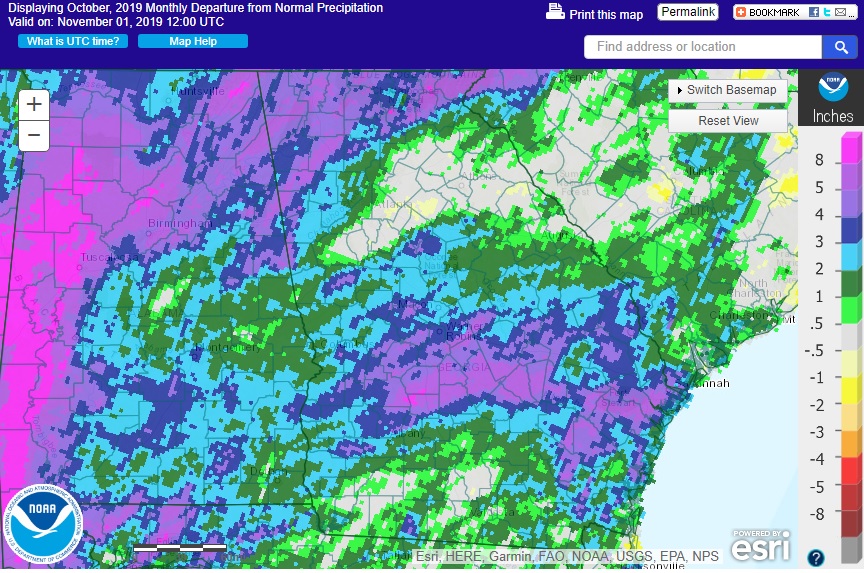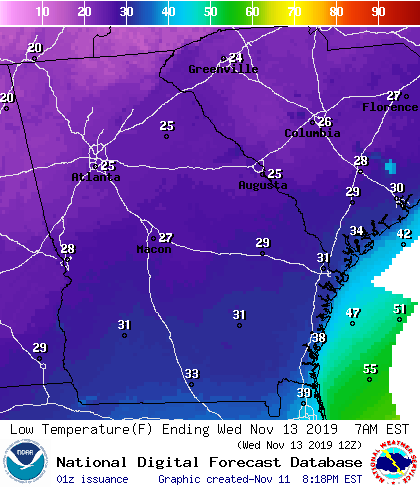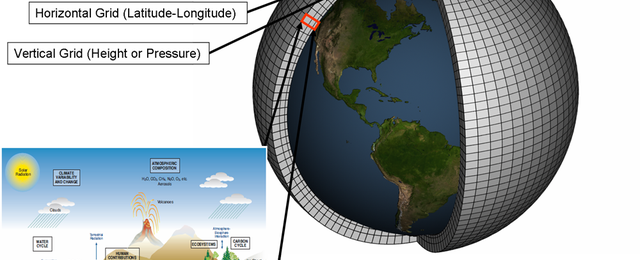-

According to a new study of 33 El Niños dating back to 1901 and published in the Proceedings of the National Academy of Science, climate change appears to be making the events stronger by shifting their hottest conditions west of the International Dateline over time. This can cause more extreme weather by shifting the regional…
-

The latest video discussion on the current water resources and the outlook for the next few months is now available from the NWS Southeast River Forecast Center. You can view it at https://www.youtube.com/watch?v=DaCVCyJoc4o&feature=youtu.be.
Posted in: Climate outlooks -

With freezing weather about to hit most of Georgia, the Farm Bureau has posted this series of helpful general guidelines for things you can do to prepare for the freezing conditions. With freezing weather bearing down on most of the country this week, it’s a great time to make sure you’re ready for cold weather.…
Posted in: Climate and Ag in the news -

If you missed the drought update webinar that I participated in last week Thursday, you can now view it on YouTube at https://www.youtube.com/watch?v=fbtUao3fzTE. It contains an update on drought conditions, water resources, and agriculture across the Southeast.
Posted in: Drought -

A blast of Arctic air is expected to move into Georgia on Tuesday, November 11, bringing rain and gusty winds through the state over the day. Once the cold front passes, frigid air is expected to drop temperatures below freezing in most of the state except the far southern counties and the coastal areas on…
-

One of the comments I get about climate modeling from people who don’t know much about them is how can we predict the climate 100 years from now when we can’t even get the weather right two weeks from now. Really, climate and weather models are built quite differently and while there are some similarities,…
Posted in: Climate science -

Even though I spend most of my time either managing the UGA weather network or working as an agricultural climatologist, my degree is in meteorology and I am a Certified Consulting Meteorologist. As a meteorologist, I get asked lots of questions about things like forecasts and climate change that occur quite frequently, even though they…
Posted in: Climate and Ag in the news